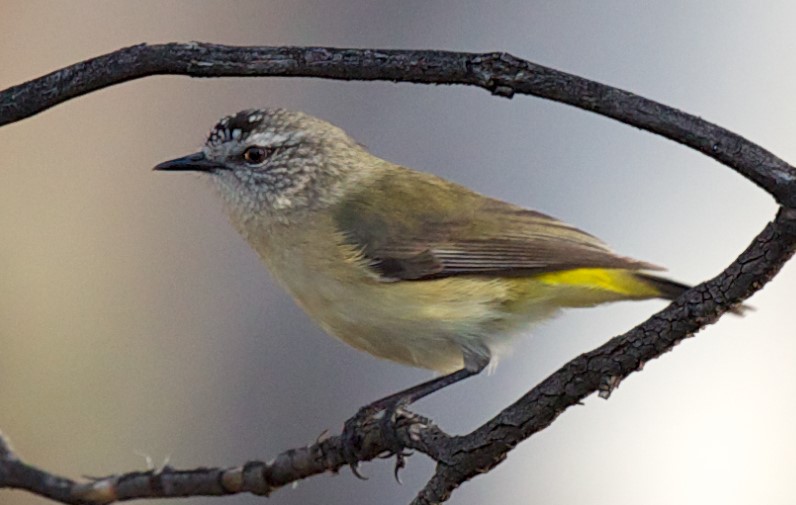There are several species of thornbills in the genus Acanthiza, such as the yellow-rumped thornbill (Acanthiza chrysorrhoa). The Yellow-rumped Thornbill is the most widespread of the thornbills, and it is also found in the open woodlands and scrubs. It most commonly inhabits ‘edge’ habitats, where woods and shrubs fringe clearings with bare ground, using bushes as shelter, roosting grounds, and nesting grounds.
There are a variety of insects, spiders, caterpillars, and seeds that are picked up by the birds as they hop along the ground in loose lines. Short, jerky undulations are made when they flee, chipping to keep contact and fanning their tails to flash their yellow rumps. Yellow-rumped Thornbills are distinguished from other thornbills by their bright yellow rump.
Yellow-rumped Thornbills are sedentary and communal, just like Buff-rumped Thornbills. They often feed with other species of insectivores after breeding, banding together in clans of 10-30 with an enlarged defended territory. During good seasons, the clans break up into small groups to breed, one female to several males raising up to four broods. For each brood, a large nest is built with a false nest at the top and a concealed entrance on the side. All members of the breeding group brood and feed the young, but only the female incubates.

Insects, beetles, bugs, and lerps are major prey items of the yellow-rumped thornbill. Aside from spiders and flies, seeds are also eaten. A flock of these birds usually consists of between three and twelve individuals, and they sometimes mix with other small insectivorous passerines, such as the speckled warbler (Chthonicola sagittatus), the weebill (Smicrornis brevirostris), and other thornbills. The bird is also called Yellow-tailed Thornbill, Yellow Tail, and Chigaree Tomtit.
Birds measure 110-115 mm in length. There is no difference between the sexes. The upper parts are often mid-brown with an olive wash; the rump and base of the tail are yellow. The wings are grey-brown in color. All outer feathers of the tail are white, with black tips. There are black spots on the forehead and eyebrows; the lords are dusky, and the cheeks are flecked with both dusky and white. The underparts are plain dull white, and the flanks are huffier. There is a greyish-white tint to the eyes. Black is the color of the bill. Dark grey is the color of the feet. The immature bird is a little duller.
Yellow-rumped Thornhills call with sharp repeated tchips in flight; softer chips in flocks; harsh single-note alarms. Yellow-rumped Thornhills sing rich twittered warbles repeated rapidly twice or three times in cycles. Also, this species mimics other birds’ alarm calls, such as the noisy miner’s alarm call. Breeding and nesting take place between July and December.
The nest is domed with a false upper nest and a chamber with a concealed side entrance beneath the false upper nest, made from grass and plant fiber bound with cobweb; the lining is down and feathers; it is hung in the outer foliage, most likely 1-5 meters above the ground.
Three or four yellow-rumped Thornhill eggs are laid; they are pale flesh-colored, with a red-brown border at one end; they are oblong-oval, about 18 x 13 millimeters in size. It takes about 19 days for the female to incubate. About 18 days after hatching, the young fledge.
The species is widespread in Western Australian, southern Australian, and Eastern Australian regions, as well as Tasmania. It is absent from the north coast of Western Australia, parts of central Australia, northern Queensland, and parts of the Northern Territory. There are forest clearings, open fields, and shrubbery edges throughout the northern hemisphere to about 18°S.







